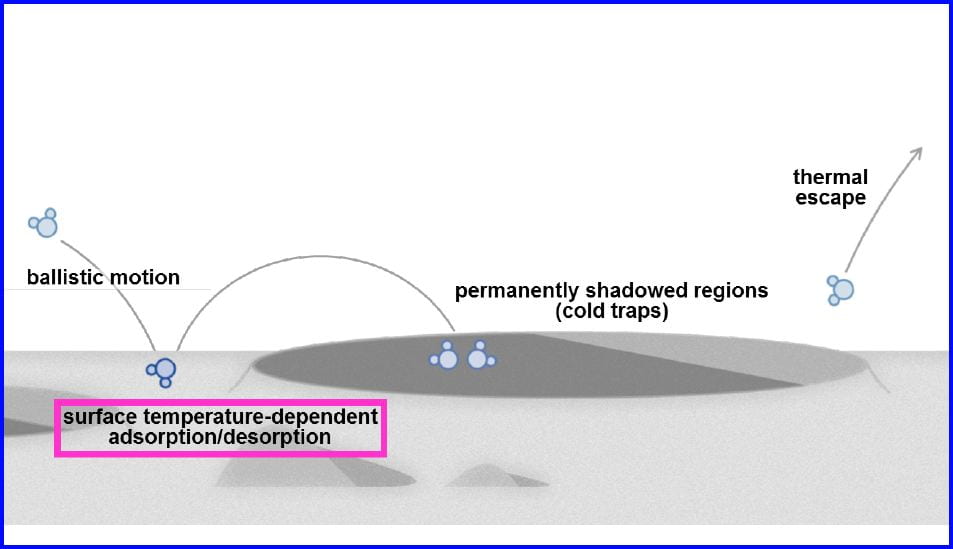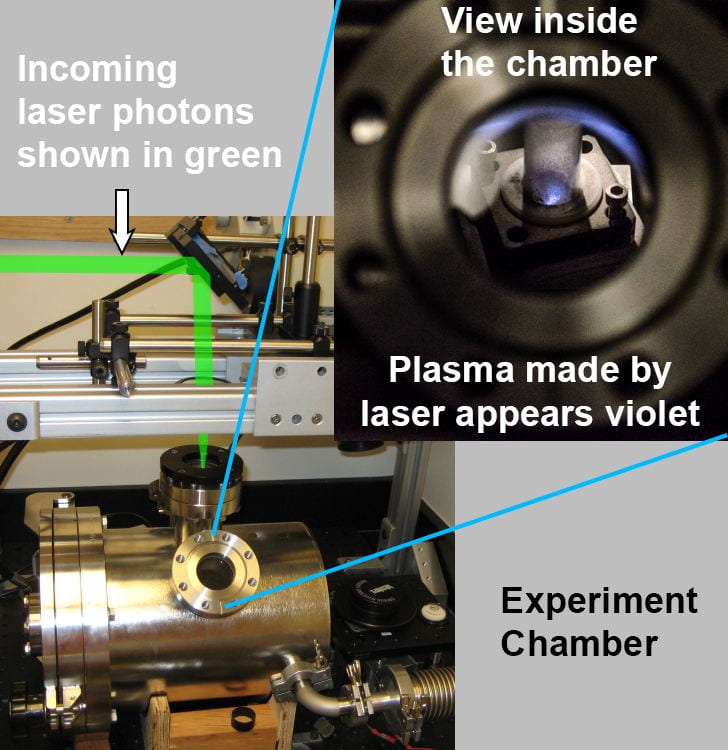This theme will study regolith (soil) formation under extreme lunar conditions and investigate the origin(s) and evolution of polar ices. Experiments and modeling will provide the insight necessary to accurately determine volatile source(s) by in-situ isotopic measurements. In addition, we will characterize physical, spectral, and chemical signatures of volatile ices, lunar minerals and glasses, and their interactions with each other under relevant conditions.
Volatile Transport and Modification

The objective of this task is to experimentally determine differences in ejection probabilities for different isotopologues of water (H2O and HDO; where D is deuterium which is a hydrogen atom with a neutron) . The Astrophysical Isotopic Characterization Experimental (ICE) apparatus will be used to study the isotopic fractionation caused by volatile mobility.
Modeling transport effects on composition

Isotope compositions may evolve between the time of volatile delivery—by comet, solar wind, and volcanism—and the time of cold-trap capture of the volatile. This modeling task will simulate how transport and loss mechanisms affect isotopic composition (e.g., between isotopomers H2O and HDO).
Laser Weathering

Remote sensing data indicate that polar regolith may have different physical, spectral, and chemical properties. This task will compare and contrast the properties of regolith (soil) synthesized in the laboratory under and polar (-200 degrees Fahrenheit and with volatiles) and equatorial (70 degrees Fahrenheit and dry) environments. Intense laser light is used in the experiment to simulate micrometeorite impacts.
Sample Alteration
In this task, we will search for evidence of mineralogical alteration in lunar rock and regolith samples. The planetary environment and analysis chamber (PEACh) will be used to examine the interaction of mineral and glass grains with ices as they undergo thermal excursions to warmer temperatures.

